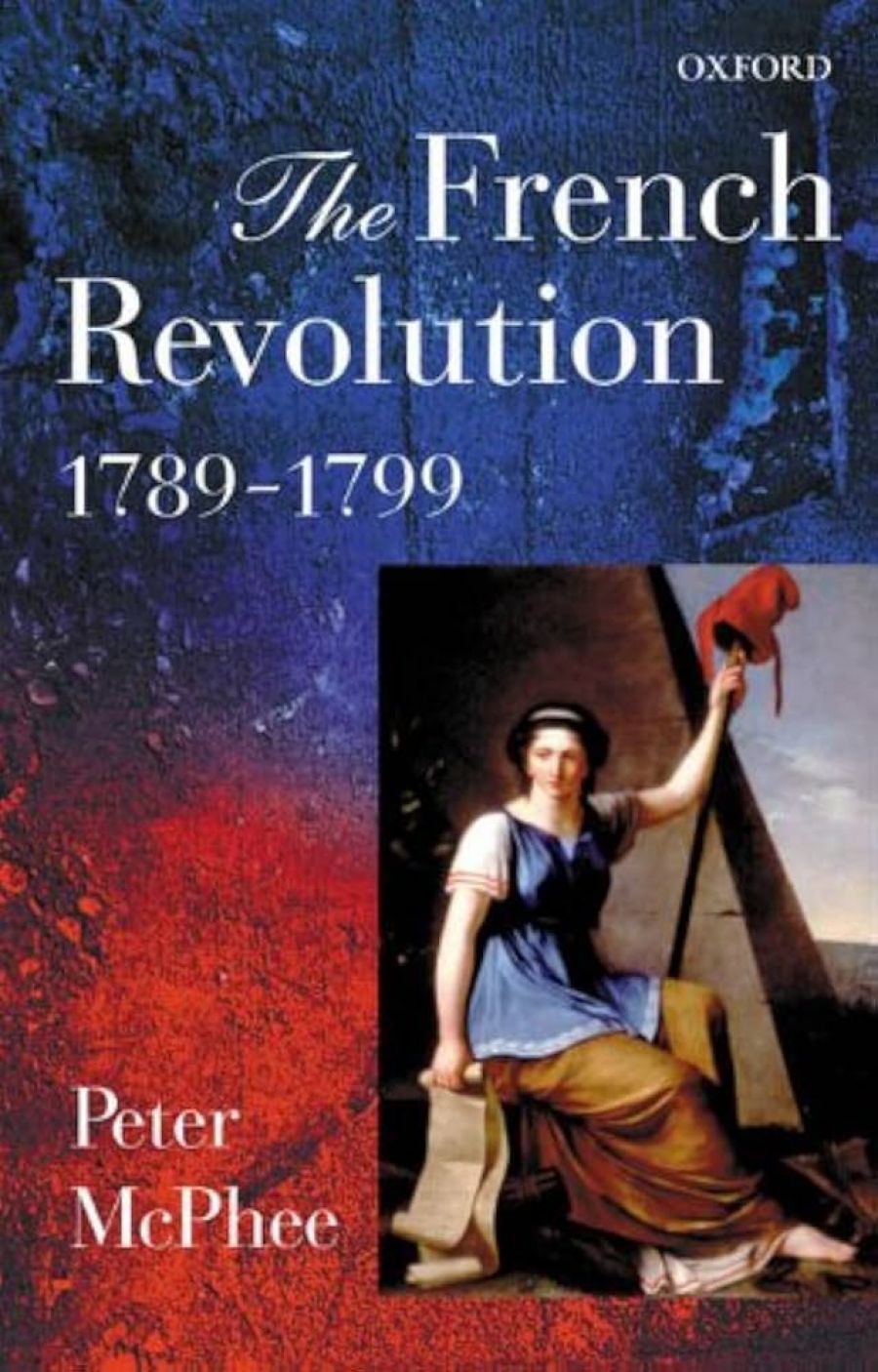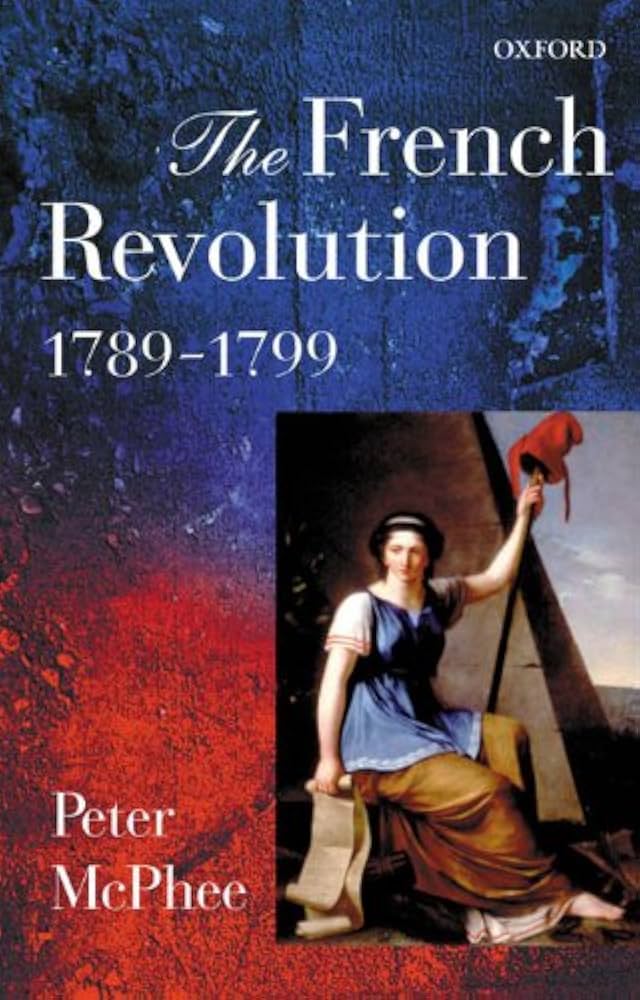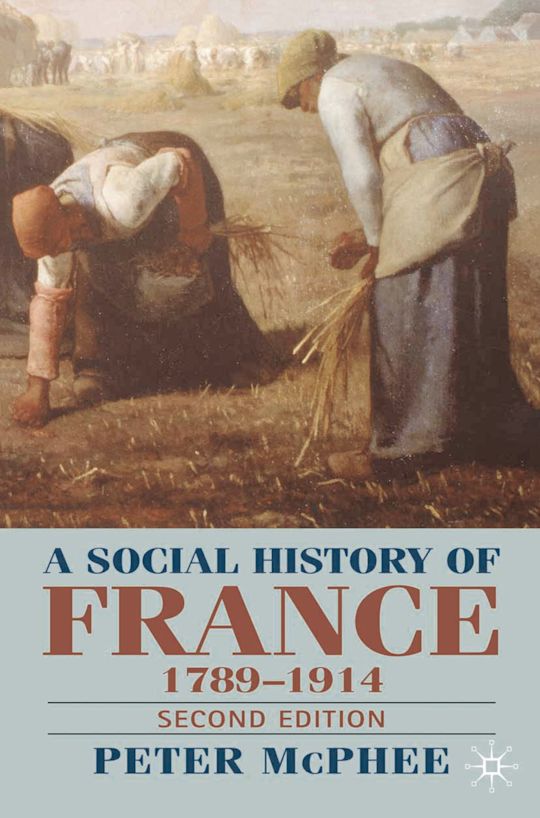
- Free Article: No
- Contents Category: History
- Review Article: Yes
- Article Title: Revolution to Resistance
- Online Only: No
- Custom Highlight Text:
Peter McPhee and Charles Sowerwine, internationally renowned historians of modern France, are both professors of history at the University of Melbourne. Their latest books are what might be termed generalist surveys that provide an extensive overview of modern French history, but in ways that are never predictable and always highly readable. The events of the French Revolution are familiar to many, but McPhee also makes accessible to non-specialists the most contested themes of the Revolution without losing the narrative thread. He brings to the fore the personalities – major and minor, urban and provincial, sympathetic and unsympathetic – that shaped, and were shaped by, these tumultuous times. He has an ear for the ‘voices’ of the Revolution and, while drawn more to some than others, he gives all a fair hearing.
- Book 1 Title: The French Revolution 1789–1799
- Book 1 Biblio: OUP, $49.95 pb, 234 pp
- Book 1 Cover Small (400 x 600):

- Book 1 Cover (800 x 1200):

- Book 2 Title: France Since 1870
- Book 2 Subtitle: Culture, Politics and Society
- Book 2 Biblio: Palgrave Macmillan, $46.20 pb, 530 pp
- Book 2 Cover Small (400 x 600):

- Book 2 Cover (800 x 1200):

McPhee demonstrates the numerous ways in which the political culture was articulated during the French Revolution, a consequence of what has been called an ‘explosion of politics’. In part this meant that many people, not simply members of narrow political élites, became conversant with the language of the Revolution, a language of freedoms and rights, of standardisation, meritocracy, accountability and equality. People expressed themselves openly and easily in a variety of forms and venues. Popular political songs (which McPhee draws on to good effect throughout the book), cheap engraved images and plays, all bore witness to the fact that the predominant ideas of the Revolution had penetrated deep into the minds of ordinary folk, and not just those in the city. ‘The Revolution was, and long remained, overwhelmingly popular: the extent of change in public life cannot be understood except in a context of mass optimism and support.’
McPhee’s treatment of two of the thorniest issues – religion and the Terror – is particularly notable. He demonstrates that the religious response to the turmoil varied. Members of the clergy were in the vanguard of the movement for change and, subsequently, among its first victims. The eventual attack on the Church, its structures and personnel, during the so-called de-christianising campaigns, sprang from a fear that it was the ideological cornerstone of the counter-revolution. McPhee enters the mental world of women who sought to protect their local churches (and thereby their sense of identity) from these humiliating and destructive campaigns. We learn that the Church defended itself by invoking its own rights and freedoms in the terms espoused by the Revolution. Thus, while it is true that one of the legacies of the Revolution was the twinning of religion with the reactionary new right of the nineteenth and twentieth centuries, it is also true that the right’s recourse to religion was often self-serving and the Church’s gradual realisation of this, together with its ultimate rallying to the Republic, was to be its making in the modern period, at least up until the mid-twentieth century.
McPhee takes on the difficult and potentially emotive issue of the Terror with a precision that is at times confronting. The Terror arose both from the reaction to the radicalisation of the ‘force for republican “regeneration”‘ and from the war against the Revolution’s enemies. This war, described by one volunteer in a letter to his family as ‘the war of liberty against despotism’, was to transform ‘political divisions into matters of life and death’. The Terror was not built into a revolutionary formula, but grew out of the fear that the Revolution’s achievements would be lost if they were not defended. However, the ideological purists were prepared to exact a heavy toll to protect their particular view of the Revolution, and this drew them into the kind of moral vacuum that enveloped other practitioners of terror in later periods.
A number of the questions raised in the course of McPhee’s book also emerge in Sowerwine’s. This may be inevitable given that the French Revolution loomed large in popular memory and had an impact on just about every aspect of French life in the succeeding century. France Since 1870 is an extraordinary book. It presents us with the unfolding, or the resolution, of a series of problems and confrontations linked to the ongoing quest to realise ‘the republican project’, and then carries the reader through the potentially catastrophic twentieth century. The book is successful because it is so ambitious. Often the reverse is true; studies of this kind can leave one feeling that a multitude of themes have been glossed over and that all the ideas (other than those based on the author’s specialised area of expertise) are derivative. But perusal of any chapter reveals that Sowerwine is as comfortable in the company of the cultural avant-garde as he is in the working-class clubs of socialist activists. The book’s structure allows for key themes to move in and out of focus. The treatment of gender politics is a case in point. These are never completely out of view and provide a key measure of the success (or otherwise) of the republican ideal.
For Sowerwine, culture is not a mere diversion from the cut and thrust of political and economic history; on the contrary, it is one of the arenas in which fundamental questions about the nature of the modern state and its aspirations are played out. Beginning with the Impressionists, Sowerwine evokes emblematic moments in the cultural history of the nation: the Ballet Russes’s first, dazzling performance of Stravinsky’s The Rite of Spring (1913); the surrealists’ attempt at balancing their alienating artistic experiment with a politics for the people; the existentialism of the immediate post-World War II era; and the ‘cultural explosion’ that ‘produced a triple wave of innovation, unparalleled in recent times, in philosophy, literature and cinema’. Sowerwine has been able to distil the essence of these moments and establish their relationship to broad social and political movements.
Sowerwine is especially interesting in his coverage of the interwar period. He has captured the atmosphere of the 1930s, and informs us of the reasons for the difference in France’s experience of fascism from that of other countries. In this context, the Popular Front was bound to be a disappointment: it was ‘not ... a government of revolutionaries, but a coalition of anti-fascists.’ In France, the political and social challenges at that point were more low-key than elsewhere. This was because there was already a long history of vigorous, evolving struggles between people championing divergent ideals. While the wartime record of France’s collaborators was to prove no better than that of other proponents of fascist ideology, the opinion of the majority, their attachment to the republic and its foundation, was to be articulated in the ultimate success of the Resistance. My own view is that there is more to praise than to condemn in wartime France. The greatest harm arising from the so-called Resistance myth, which interpreted people’s behaviour in the war generously and took hold soon after the Liberation, was not that it overshadowed the deplorable consequences of France’s collaboration, but that it led to a cynicism toward Resistance and, by implication, its (republican) political, social and cultural foundations.
What is so stimulating about these two books is that the questions they pose are both current and urgent without being trite. McPhee notes in his concluding chapter that the historical drama of the French Revolution touches contemporary politics and society. Balancing the claims and expectations of liberty and equality is as difficult today as it has ever been. And the example of eighteenth-century France, when forces for change collided with tradition, is replete with reference points for debates taking place around the world today on the appropriate role of religion in states undergoing transformation. Similarly, the expansive perspective of France Since 1870 invites speculation on the success of French democracy. An understanding of fascism’s mixed fortunes in France, for example, sheds light on its successes in other European countries. Social cohesion and a strong identification with republican institutions predominated in France at the crucial moment. Subsequently, the French state’s ongoing commitment to core values sets it apart from the less interventionist and less egalitarian practices of its American counterpart, according to Sowerwine. On balance, it would seem that France since 1870 (or even 1789) has much to recommend it.


Comments powered by CComment